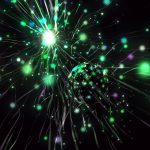Magnets at the Heart of High-Luminosity Particle Collisions
The High-Luminosity Large Hadron Collider (HL-LHC), an upgrade to the LHC, is set to revolutionize particle physics, thanks to cutting-edge magnets like the Inner Triplet (IT) series. These magnets, key to directing and focusing particle beams, are undergoing rigorous testing at CERN's IT String facility, a full-scale replica of the HL-LHC's operational sections near the ATLAS and CMS experiments.
Powerful Magnets for Greater Luminosity
Among these advancements are quadrupole magnets featuring niobium–tin (Nb₃Sn) superconductors. With a magnetic field of 11.3 tesla—compared to the current 8.6 tesla—they offer increased beam focusing and higher collision rates. These magnets are complemented by correction magnets that fine-tune beam trajectories, ensuring precision even under immense electromagnetic forces.
Complex Installation and Global Collaboration
Recent installations include the Q2a cryoassembly, which integrates quadrupole and dipole corrector magnets, and the D1 Separation and Recombination Dipole. These components, weighing over 16 tons each, were transported and positioned using specialized equipment.
What’s Next for the HL-LHC?
The IT String facility will continue to integrate magnets from global contributors, culminating in system tests at cryogenic temperatures by 2026. These developments bring us closer to the next era of particle physics, where high-intensity beams will unlock new scientific discoveries.
Apex Magnets
From revolutionizing particle physics to enhancing everyday innovations, magnets are everywhere. The HL-LHC's cutting-edge magnets are just one example of their potential. Stay tuned for more inspiring stories about how magnets are shaping the future, and don’t forget to explore our extensive range of permanent magnets for your own projects.
Have questions? Contact us today—we’re here to help!

